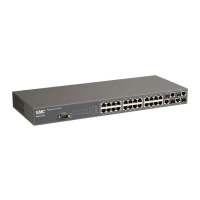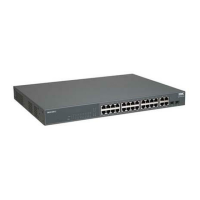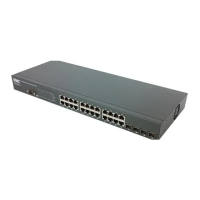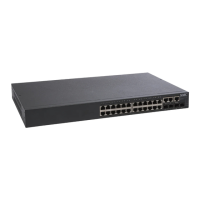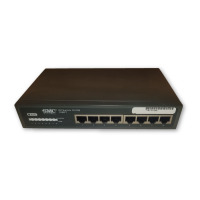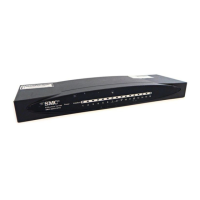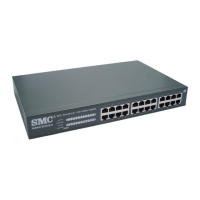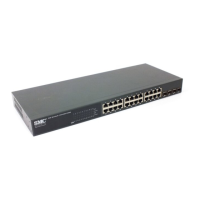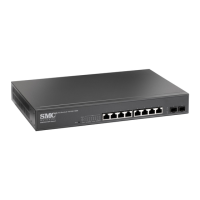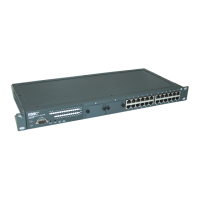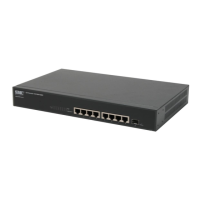SPANNING
-
TREE
MST
PORT
-
PRIORITY
29-23
Command Mode
Interface Configuration (Ethernet, Port Channel)
Command Usage
• Each spanning-tree instance is associated with a unique set of VLAN
IDs.
• This command is used by the multiple spanning-tree algorithm to
determine the best path between devices. Therefore, lower values
should be assigned to interfaces attached to faster media, and higher
values assigned to interfaces with slower media.
•Use the no spanning-tree mst cost command to specify
auto-configuration mode.
• Path cost takes precedence over interface priority.
Example
Related Commands
spanning-tree mst port-priority (29-23)
spanning-tree mst port-priority
This command configures the interface priority on a spanning instance in
the Multiple Spanning Tree. Use the no form to restore the default.
Syntax
spanning-tree mst instance_id port-priority priority
no spanning-tree mst instance_id port-priority
• instance_id - Instance identifier of the spanning tree.
(Range: 0-4094, no leading zeroes)
• priority - Priority for an interface. (Range: 0-240 in steps of 16)
Default Setting
128
Console(config)#interface ethernet ethernet 1/5
Console(config-if)#spanning-tree mst 1 cost 50
Console(config-if)#
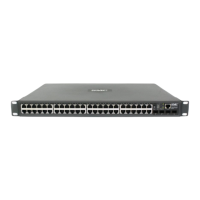
